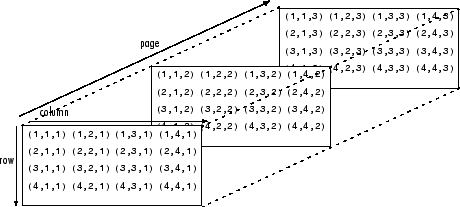pageeig
Syntax
Description
[
computes the eigenvalue decomposition of each page of a multidimensional array. The pages in
the outputs satisfy the equation: V,D] = pageeig(X)X(:,:,i) * V(:,:,i) = V(:,:,i) *
D(:,:,i).
If X has more than three dimensions, then
pageeig returns arrays with the same number of dimensions such that
the outputs satisfy the equation: X(:,:,i,j,k) * V(:,:,i,j,k) = V(:,:,i,j,k) *
D(:,:,i,j,k).
[___] = pageeig(,
where X,balanceOption)balanceOption is "nobalance", disables the
preliminary balancing step in the algorithm. The default for
balanceOption is "balance", which enables balancing.
The pageeig function can return any of the output arguments in previous
syntaxes.
[___] = pageeig(___,
returns the eigenvalues in the form specified by outputForm)outputForm using any of
the input or output arguments in previous syntaxes. Specify outputForm as
"vector" to return the eigenvalues as pages of column vectors or as
"matrix" to return the eigenvalues as pages of diagonal
matrices.
Examples
Input Arguments
Output Arguments
More About
Tips
Results obtained using
pageeigare numerically equivalent to computing the eigenvalue decomposition of each of the same matrices in afor-loop. However, the two results might differ slightly due to floating-point round-off error.
Version History
Introduced in R2023a
